|
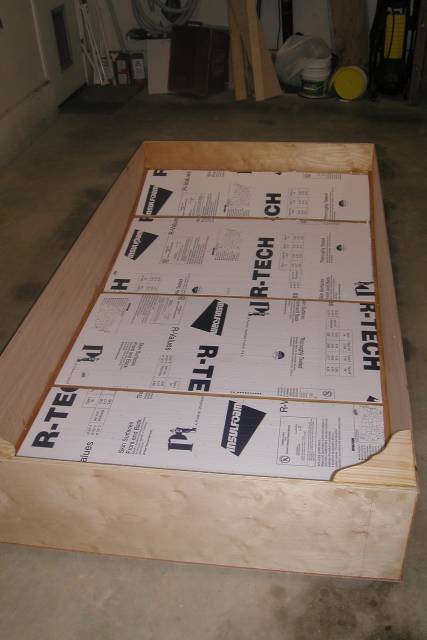
Adding floatation foam. It is actually foam insulation available from
Home Depot in 2'x4'x1 1/2" sheets. This added in excess of 3 1/2 cu.ft. of flotation to the boat.
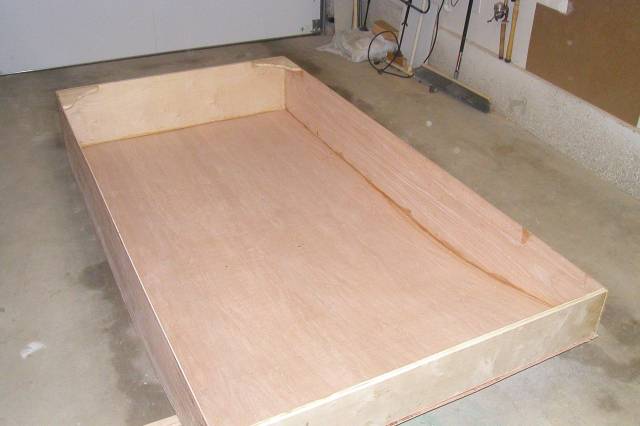
The false bottom installed and it's beginning to look like a boat.

Since
I felt that I had sufficient floatation, I decided to make the front deck a storage area. The holes on the side are
to keep oars and rods in place. I reinforced the center section of the deck in
hopes that I could mount a front mounted trolling motor, but have since decided that it might not work out very well.
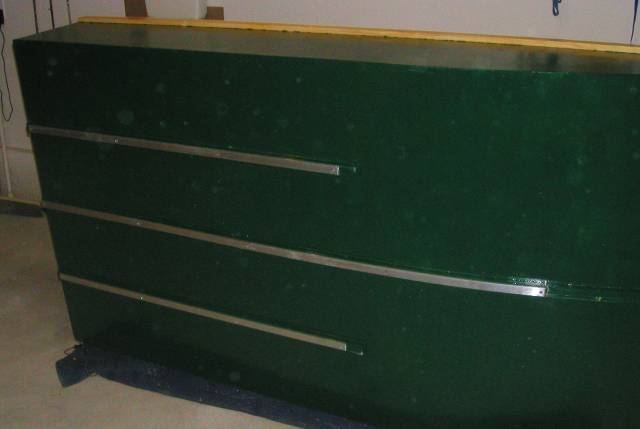
1" x 1/8" aluminum strips were attached to skids to protect against those gravelly
landings.

The exterior of the hull is coated with Gluvit resin and then
painted with Miller Rich Green spar enamel. The interior is sealed with marine sealer and painted with Miller spar varnish.
The swivel seat in mounted on a plywood base. I actually built two bases, one low enough for rowing when motors are not allowed,
and one high enough for more comfort when using the trolling motor. I use a 55lb. thrust Minnkota trolling motor and a Group
27 deep cycle battery.
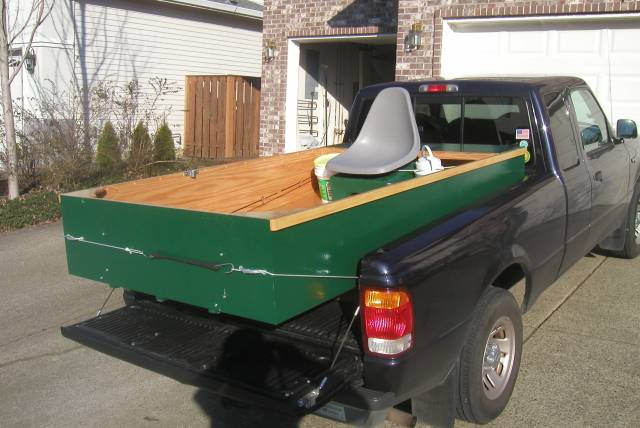
The LilJon fits nicely in the back of a compact pickup.
Since it is too awkward to try to carry or drag the boat, I devised a set of wheels that attach to the rear transom
and allow me to roll the boat.

After much use, I found
that the attaching mechanism was not strong enough to withstand some of the rough launching sites that I encountered. I went back to the drawing board and came up with a new design that attaches permanently
to the transom. The brackets are 1 ½" aluminum angle. The center pivot is a ¼" bolt with a lock nut. The wire clip
pin is attached to the boat with 30# mono in case of clumsy fingers. I obviously did not reinvent the wheel
here, as the design is similar to some larger ready-made setups
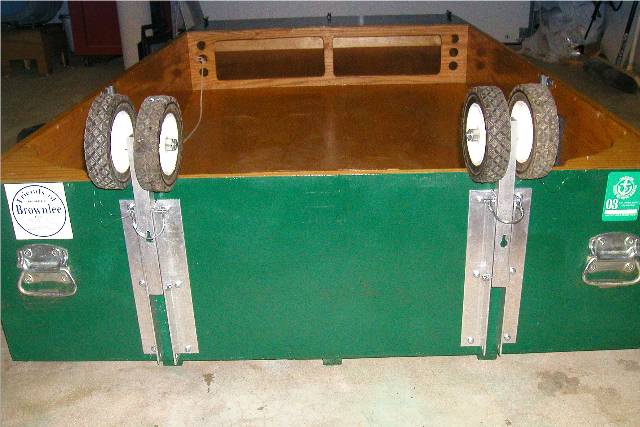
|
| Wheels in the locked up position |
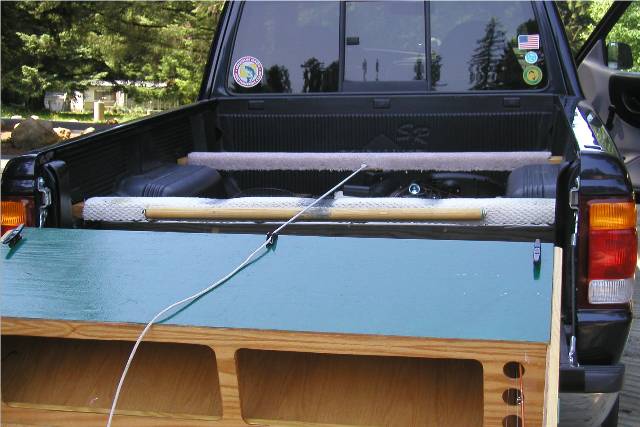
Loading is easy even
for a senior citizen like me. I just roll the boat up to the tailgate and keep it there by means of a line that attaches to
a vee cleat. I then walk to the back of the boat, lift up the back in and slide it onto the pickup. The total weight of the boat is approximately 100 lbs. While
the boat is quite easy to handle, if I were to build another one, I would use 1/8" plywood for the two bottoms and laminate
them to the foam to form a sandwich core. It would result in a weight savings
of about 25 lbs. Torsional strength would be as good or better and I believe
penetration resistance would be sufficient due to the stiff foam backing. Steve
Lewis of Lewis Boat Works is of the opinion that the thinner plywood should be used for the false bottom only and use the
¼" to retain the penetration strength of the bottom.
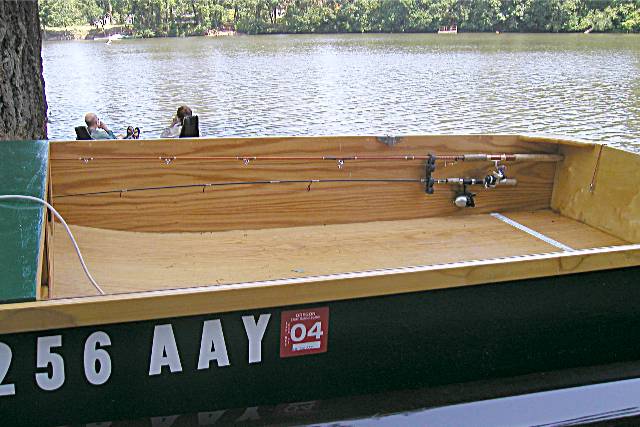
Another late modification
was to add rod holders on each side. I bought a rod holder set at Wal*Mart and
bonded one piece on each side and used the holes in the front deck to locate the rod tips.

I found an easy solution
to storage. I had an old creeper laying around that I removed the headrest and clamped onto the transom. I can
tip the boat up on end and roll it around the garage. After I installed the permanent wheels, it just took a simple
modification to the creeper to accommodate them.
I did not keep track
of the hours I spent building the LilJon, but I worked on it over the period of about three weeks in my spare time. I appreciate the assistance, ideas and encouragement that Steve Lewis gave me during and after the project. The total cost, including redesigning the wheel system, rod holders, etc. was about
$335.
I probably spent over
400 hrs. fishing in the boat this season and really enjoy it. More often as not,
the big boat sits in the garage if I am heading out on my own.
|

